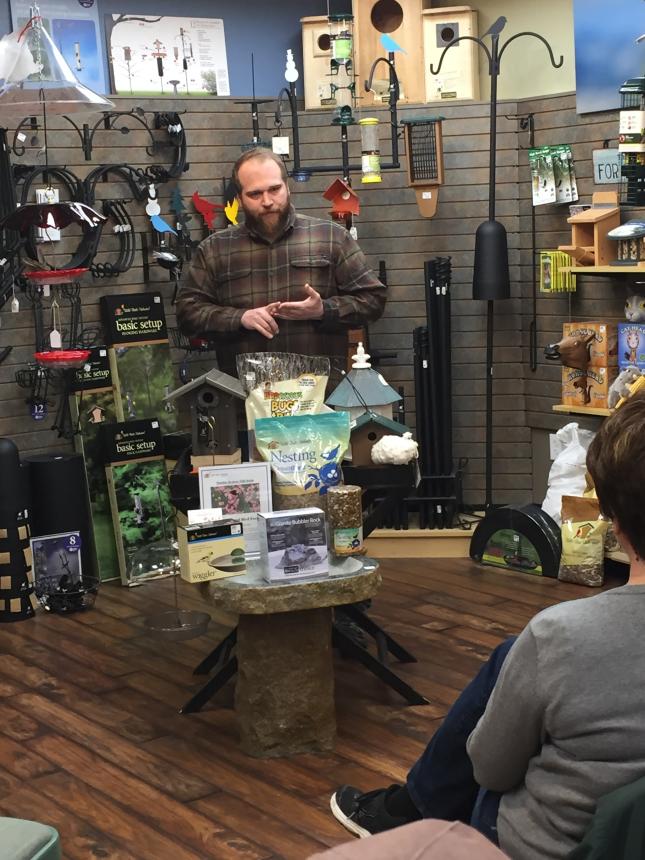Spring Backyard Bird Feeding Tips

Tips from Connor Fox on what to expect from backyard bird feeding during the spring!
Migration
- 400 species of birds partake in either full or partial migrations
- Birds know when to migrate based on length of daylight
- Dark-eyed Juncos, White-crowned Sparrows, and White-throated Sparrows will depart north for the summer
- Our beloved Ruby-throated Hummingbirds will begin to arrive
- In preparation for early migrants it's best to have your feeder up by April 15th
- Remember to keep hummingbird feeders spread out because they are quite aggressive and will guard feeders
- Make your yard appealing to migrant birds by providing the following: moving water, brush piles, bark butter, and suet.
- Add moving water to your yard with water wigglers or fountain bubblers
- Plant native species of fruiting or seeding plants
- March is a good time to offer food, as their natural food supplies are at their lowest
- Migrant birds that will start returning include:
- Ruby-throated Hummingbirds
- Baltimore Orioles
- Chipping Sparrows
- Rose-breasted Grosbeaks (only passing through)
- Scarlet & Summer Tanagers
- Many species of Warblers
- Indigo Buntings
- Common Grackles
- Brow-headed Cowbirds
- Red-winged Blackbirds
- Goldfinches will start molting to their highlighter yellow breeding plumage. Some are very bright by the end of March
- As the seasons change it is a good time to clean your feeders to clean out any residue that built up during the colder months
Nesting
- By the end of February Chickadees and Bluebirds are checking out potential nesting sites
- Primary cavity nesters - make their own homes, but may use nest boxes if readily available
- ex: woodpeckers
- Secondary cavity nesters - use existing cavities. Cavities that were excavated by woodpeckers or are naturally occurring
- ex: bluebirds, chickadees, titmice, etc
- There are three type of nest boxes
- Functional
- Fit the needs of the species that will be using it to nest in & can be mounted in a way that is safe for the birds
- Functional-decorative
- Functional houses that are painted or decorated. May not have all the features of a good nest box.
- Decorative
- Not functional houses. Should be used as decoration inside
- Functional
- There are nine features of a good nest box:
- Good ventilation and insulation
- At least one panel that opens & closes for easy clean out/pest removal
- Adequate drainage
- Roof overhang that provides shade and protection from driving rain
- No perch
- Made out of safe, appropriate durable materials
- No paint or stain
- Rough interior
- Easy mounting
- The position of the nest box can be used to target different birds
- A nest box placed on or near a woodline can be more appealing to wrens, chickadees, nuthatches, downys, and titmice
- A box placed in an open field appeals more to bluebirds and swallows
- Only 20% of birds survive their first year and only 12.5% of those make it to their second year
- Feeders only supplement about 10% - 20% of a bird's diet
- Feeders tend to supplement more in the early spring when their natural food sources are their scarcest
- Feeding while birds are nesting has been shown to increase the success of fledgling birds
- Nesting material can be provided
- Plant fluff, dry grass, twigs, bark strips, pine needles, etc
- Nesting materials can be offered in empty suet cages, in open baskets, or even in plies on the ground
- Most species of birds have multiple broods per nesting season
- It's not too late to put up a nest box until the fall

